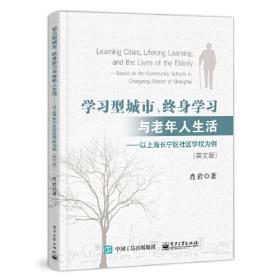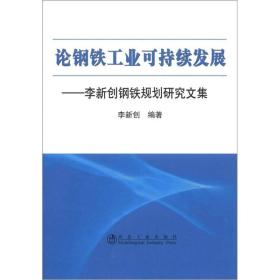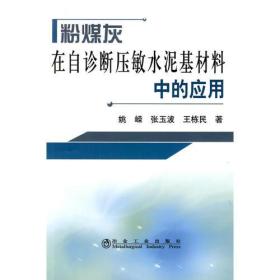
学习型城市、终身学习与老年人生活——以上海长宁区社区学校为例
正版闪电发货
¥ 20.06 3.4折 ¥ 59 全新
仅1件
北京朝阳
认证卖家担保交易快速发货售后保障
作者肖岩
出版社电子工业出版社
出版时间2021-03
版次1
装帧其他
上书时间2024-11-05
- 在售商品 暂无
- 平均发货时间 10小时
- 好评率 暂无
- 最新上架
商品详情
- 品相描述:全新
图书标准信息
- 作者 肖岩
- 出版社 电子工业出版社
- 出版时间 2021-03
- 版次 1
- ISBN 9787121365898
- 定价 59.00元
- 装帧 其他
- 开本 16开
- 纸张 胶版纸
- 页数 224页
- 字数 466千字
- 【内容简介】
- 本书选取上海市社区学校老年学习者作为研究对象。作者参与了这些老年学习者的学习活动,并对他们进行了深度访谈。书中涉及的主要内容和大量信息基于当时早年的调研报告。 本书介绍了老年学习者生活各个时期的学习活动,以及学习活动给他们的生活和整个社区文化等方面带来的变化。 希望本书能为学习型城市建设和老年学习带来新的思考。
- 【作者简介】
- 肖岩,教育学博士,毕业于韩国首尔大学教育学院教育学专业。现就职于浙江工业大学,教育政策研究中心一员。
- 【目录】
-
目 录
CHAPTER 1 INTRODUCTION 1
1.1 Research Background 1
1.2 Research Purpose and Research Questions 2
1.3 Research Methodology and Process 3
1.3.1 Research methodology 3
1.3.2 Research process 4
1.4 Definition of Terms 8
1.4.1 Learning city 8
1.4.2 The elderly 9
1.4.3 Elderly learning 9
1.4.4 Elderly lives 10
CHAPTER 2 LIFELONG EDUCATION IN MODERN CHINA 11
2.1 The Historical Development of Lifelong Education 11
2.1.1 Ideas of lifelong education in Chinese traditional education 11
2.1.2 Lifelong education development in contemporary China 13
2.1.3 New explorations by Chinese scholars in the field of lifelong education 15
2.2 Evolution of Modern China’s Lifelong Education Policy 17
2.2.1 Infant stage of lifelong education policies (late in the 1970s to 1980s) 18
2.2.2 Developing lifelong education policies and legislation (in the 1990s) 18
2.2.3 Period of lifelong education policies in full swing (2000-2012) 20
2.3 Characteristics and Problems in the Research of Chinese Lifelong Education 22
CHAPTER 3 LEARNING CITY IN CHINA 24
3.1 Formation and Development of the Lifelong Learning City in China 24
3.1.1 Motivation to establish a lifelong learning city in China 25
3.1.2 Representative lifelong learning cities in China 27
3.1.3 Current situation and open problems of lifelong learning cities in China 28
3.2 Constructing Lifelong Education System in Shanghai 30
3.2.1 Introduction of Shanghai 30
3.2.2 Constructing lifelong education system in Shanghai 31
3.3 The Process of Building a Learning City in Shanghai 43
3.3.1 The piloting and idea-forming stage (1999-2005) 43
3.3.2 The blueprinting and system-building stage (2006-2010) 45
3.3.3 The standardized development and mechanism innovation stage(2011-) 48
CHAPTER 4 ELDERLY LEARNING IN CHINA 50
4.1 Elder Population Features 50
4.1.1 Population 50
4.1.2 Age structure and gender structure 52
4.1.3 Demographic distribution 54
4.1.4 Urban, town, and rural elderly population distribution 56
4.2 The Characteristics of the Elderly and Elderly Learning 57
4.2.1 The characteristics of the elderly 57
4.2.2 The elderly learning characteristics 62
4.3 Elderly Education Development 63
4.3.1 The initial stage of elderly education in China(in the 1980s to 1990s) 63
4.3.2 The development and perfection stage of elderly education in China
(middle to late 1990s) 64
4.3.3 The innovative stage of elderly education in China (in the 21st century) 65
4.4 Elderly Education Feature 66
4.4.1 Hierarchical and diversified elderly education management system 66
4.4.2 Diversified elderly education forms and means 68
4.4.3 Systematic and standard management of elderly education curriculum 68
4.4.4 Elderly education extending from large and medium-sized cities to the
countryside 70
4.5 Elderly Education Institutions and Implementation 71
4.5.1 Community elderly education 71
4.5.2 The elder university 72
4.5.3 Media elderly education 73
4.5.4 Self-organized elderly education 73
4.6 Community Schools in Shanghai 74
4.6.1 The management organizations of the community school 74
4.6.2 The teachers’ structure 76
4.6.3 The curriculum content of the community school 77
4.7 Global Elderly Learning Research 79
4.7.1 Feasibility of adult learning 79
4.7.2 Differences and influencing factors of elderly learning 82
4.7.3 The successful aging 85
4.7.4 The culture phenomenon of the aged learning and elderly life 87
CHAPTER 5 LEARNING AND LIFE IN THE ELDERLY STAGE: CONTENTS
OF LEARNING CITY COMMUNITY SCHOOL 91
5.1 Seniors’ Life Before and After Retirement 91
5.1.1 Discontinuity of education 91
5.1.2 Seemingly settled life before retirement 92
5.1.3 Perceptions of the elderly: significance of stability 93
5.2 Generating Learning Needs 94
5.2.1 Learning needs: motivated to learn 94
5.2.2 Aspects of learning needs 96
5.3 Environments Amicable to Learning 99
5.3.1 Fostering access to learning 99
5.3.2 Family and peer support in learning 105
5.4 Characteristics of Participation in Elderly Learning 108
5.4.1 Spectrum of adaptation into learning 108
5.4.2 Depicting adaptations into learning 110
5.4.3 Comprehension leading to reflection 121
5.5 Scenes of Life Change Incurred from Elderly Learning 125
5.5.1 General characteristics of personal improvement 125
5.5.2 Fostering patterns within the family 130
5.5.3 Expansion of the social environment 137
CHAPTER 6 INTERRELATION OF ELDERLY LEARNING AND THEIR
LIVES IN THE CHINESE SOCIETY 148
6.1 Elderly Learning and Lives: Trigger of Learning, Blurring of Boundaries 149
6.1.1 Corporeal dimension in elderly learning and lives 149
6.1.2 Learning as an embodiment of the mental dimension 153
6.1.3 Elderly learning: family life in miniature 160
6.1.4 Elderly learning as a way of social Life 163
6.2 Enrichment of Elderly Lives through Elderly Learning 167
6.2.1 Promoting changes in the corporeal dimension 168
6.2.2 Quality enhancement in the mental dimension 171
6.2.3 Fostering cohesion within the family 175
6.2.4 Strengthen social lives of elders 178
6.3 Cultural and Institutional Aspects of Elderly Learning 182
6.3.1 Diffusion of community culture 182
6.3.2 Role of promoting elderly care functions within China 187
CHAPTER 7 DISCUSSION AND CONCLUSION 192
7.1 Discussion 192
7.2 Conclusion 200
参考文献 203
点击展开
点击收起
— 没有更多了 —












以下为对购买帮助不大的评价